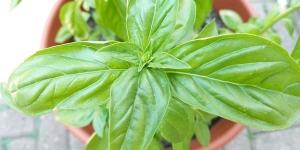How to Care for Devil's Ivy


Devil's ivy, also referred to as golden pothos or the money plant, is a house plant from the Araceae family. Devil's ivy is commonly used as a decorative element in homes, shopping malls, offices etc. Not only does this heart-like shaped yellow and green leafed plant reduce indoor air pollution, but it’s also believed by many that it brings luck into a home.
For more about how to care for golden pothos or devil’s ivy, keep reading this oneHOWTO step-by-step.
You'll need:
- A devil's ivy cutting
- A pot
- Compost
- A saucer with stones that will be used as drainage
Steps to follow:
Are you wondering how to grow a golden pothos? You have two routes which you can take when wanting to grow a devil’s ivy plant:
- Take a cutting of about 15-20 centimeters and place this piece of devil’s ivy plant in water until it grows some small roots. Make sure to change the water every two days.
- Or, place the cutting directly in a pot with soil. Because devil ivy plants climb when they grow, we recommend placing a stick into the moderately damp soil so that the leaves follow this line.
For more, we recommend reading how to care for a silver satin pothos.

Devil Ivy is a houseplant that should be kept in a bright space but out of direct sunlight. If your devil’s ivy is not getting enough sunlight, you may notice that its leaves change yellow. In this case, place it in a sunnier spot.
If you'd like to grow your Devil's Ivy outdoor then there are some points that you should take into account so that it grows healthily:
- Plant your devil’s ivy next to a tree or high wall, specifically so that it only gets sunlight during some hours in the day. This will also function aesthetically if you’re looking for a climbing plant effect.
- If you live in a rainy climate, you won’t need to water your devil’s ivy plant.
- If you live in a dryer climate, you will have to water your Devil's ivy once a week.
The best temperature for a golden pothos or devil’s ivy is between approximately 10 to 25 degrees Celsius (60-75 degrees Fahrenheit). Generally, devil’s ivy grows better indoors. However, if you wish to place your devil’s ivy outside, you should avoid a climate of extremely low or high temperatures.
For more, discover our list of the best large indoor plants for low light.

Devil’s ivy watering should be moderate. We recommend watering your golden pothos every 10 days in winter and every 5 days in summer. Its soil should always be dry and if you water it in excess, its leaves will begin to turn brown.
We recommend using fertilizer every 2 weeks in order to keep the plant healthy and help it grow effectively. In fact, we recommend using natural fertilizer. For more, read how to make natural fertilizer at home for plants and garden.
Devil ivy plants enjoy humid environments. In order for you to achieve this type of atmosphere, place a saucer under the pot with some stones or spray the leaves. Make sure you know how to prune Devil's Ivy correctly in order to keep it healthy at all times.

Repotting your golden pothos should be done once a year, preferably during springtime. When repotting your devil’s ivy, we suggest cutting off the longest stems if you don’t want it to grow longer.
If, however, you would like it to grow longer, you will need to repot it into a bigger pot, with plenty of fertilizer and stones. Take note that during plant repotting, it’s normal that it may shed some leaves.
As we’ve already mentioned, many believe that a devil’s ivy plant is a money plant that bring wealth and prosperity into a home. So, what other plants bring good luck? Read what are the best plants for good luck.
If you want to read similar articles to How to Care for Devil's Ivy, we recommend you visit our Gardening & plants category.
Tips
- Avoid changing the devil's ivy pot a lot. Not before every two years.
- Devil's Ivy is not a recommended plant if you have cats at home, as it's highly toxic for cats.
- You may use it as a hanging plant, it will look great in any room and will grow downwards to create a beautiful waterfall effect.








